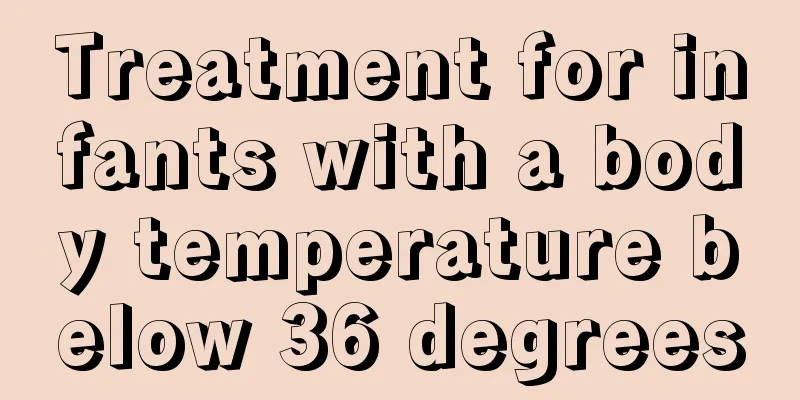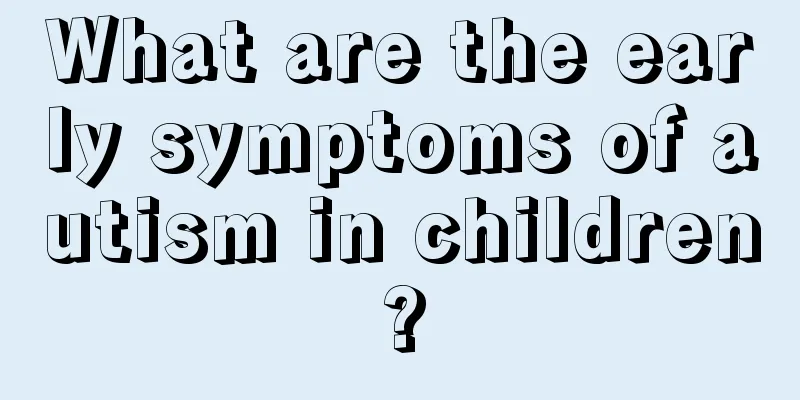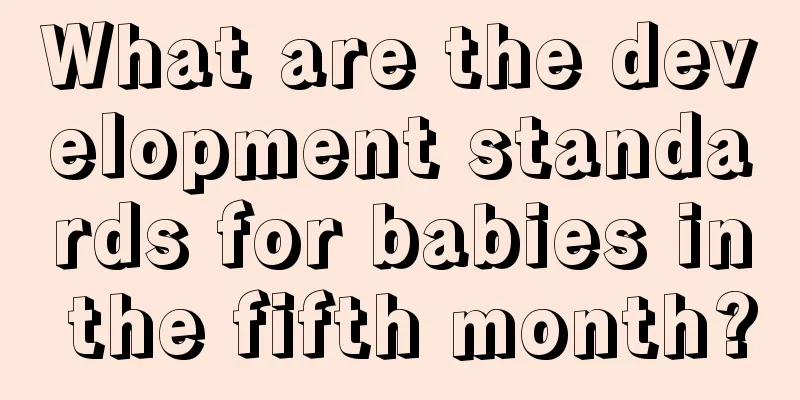Treatment for infants with a body temperature below 36 degrees

|
Nowadays, infant diseases are rampant and many infants have a body temperature below 36 degrees. This phenomenon concerns all parents. Hypothermia is more serious than fever and more difficult to treat. It tortures the children and many parents. So, is there any good way to treat infants with a body temperature below 36 degrees? Many parents are racking their brains over how to solve the problem of baby's body temperature below 36 degrees and reduce trouble for us parents. Here we will introduce the treatment method for baby's body temperature below 36 degrees. Treatment: 1. Rewarming Rewarm gradually; the lower the temperature, the more cautious you should be in rewarming. Rewarming too quickly can cause shock, convulsions, or respiratory arrest. Slow rewarming is suitable for children with mild hypothermia. The child should be placed in a warm room and wrapped in a warm blanket or small quilt. And it is expected to return to normal body temperature within 12 to 24 hours. For patients with severe hypothermia, slow rewarming is often ineffective. Currently, external heating and active rewarming are advocated to reduce the damage of hypothermia to the body. (1) Wrap in a warm blanket. (2) The electric heating blanket is set to servo control or manual control at 38-40℃. (3) Warm water bath: Soak in 40℃ warm water for 10 to 15 minutes, 1 to 2 times a day. (4) Incubator or radiant heating. 2. Prevention and control of infection Infection can be a cause of hypothermia or a complication. Evidence of infection should be actively sought and antibiotics should be given to treat or prevent infection. 3. Feeding and fluid therapy During the rewarming process, calories should be supplemented, fluid intake should be limited, acidosis and microcirculation disorders should be corrected, and blood sugar should be monitored. Energy should be supplied at the beginning of rewarming, but because of hypothermia and circulatory disorders, the digestion and absorption of food are inhibited, and necrotizing enterocolitis, gastroesophageal reflux, tracheal aspiration and respiratory disorders may occur. When feeding through the gastrointestinal tract is not possible during low temperature, parenteral nutrition can be given as a supplement. 4. Cardiovascular System Support When the body temperature is low, the newborn's myocardium is damaged, heart function is impaired, and plasma volume increases. During rewarming, limit fluid intake, use diuretics to increase urine output, reduce hypervolemia, and even use positive inotropic drugs. 5. Treatment of pulmonary hemorrhage If massive pulmonary hemorrhage occurs and drug treatment is ineffective, artificial ventilator treatment can be tried. 6. Treatment of primary disease If hypothermia is only a manifestation of certain diseases in the newborn, we should actively look for the cause and treat the primary disease under reasonable ambient temperature and adequate insulation conditions. The above content introduces us to how to treat a baby's body temperature below 36 degrees. When our baby's body temperature is below 36 degrees, we can treat our children faster and better, make the children recover faster, and relieve our parents of unnecessary worries. I hope the above content is helpful to everyone. |
<<: How to treat a crying newborn
>>: Treatment of foaming at the mouth of a newborn
Recommend
Causes of red eyes in children
Eyes are our main sensory organs. If there is a p...
Causes of a baby's big belly
Young children are very young and do not know whi...
How to prevent babies from getting sick after six months?
Feeding a baby is a careful task, because the bab...
Is it a good idea to send my baby to kindergarten when he is two and a half years old?
A two and a half year old baby can go to kinderga...
How to teach your child addition and subtraction
As children grow up day by day, how to effectivel...
What should babies pay attention to when they have rhinitis and sinusitis?
Friends who have suffered from sinusitis know tha...
What do premature babies need to supplement?
If the child is a premature baby, then the child&...
What to eat for a 3-year-old baby with anemia
Every parent is very confused. Their baby is whit...
Early symptoms of tuberculosis in children
Tuberculosis in children is a relatively serious ...
How to pay attention to viral colds in infants and young children
Viral colds in infants and young children are a c...
Why is there foam in the stool of newborns?
The stomach and intestines of newborns are relati...
My baby has sparse hair on the back of his head. What’s going on?
Some babies have normal hair on their heads, but ...
How to provide nutrition for children
Today's parents are always worried about thei...
What should I do if my child has a fever at night?
In the cold winter, many babies with poor resista...
What should I do if my baby has chickenpox?
It is quite common for babies to get chickenpox. ...









